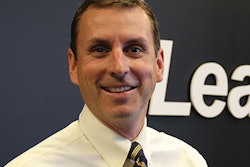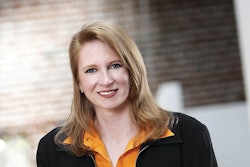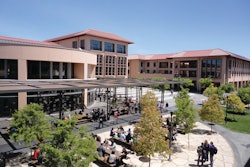In the post-millennium world, many engineering and supply chain functions are finding themselves increasingly relying on a generation of workers that have much-needed “pre-millennial” technical knowledge regarding the application of principles and techniques to specific tasks. At the same time, companies are looking to younger staff to help them adapt their processes to take advantage of rapidly changing technologies, shifting economic conditions and expanding global markets.
Faced with the challenge of managing a cross-generational workforce, leading companies are implementing a mix of mentoring programs, flexible staff management policies and innovative learning opportunities, all with the goal of getting ahead of the generational curve.
Mentoring Works in Both Directions
Organizations reliant on knowledgeable workers must keep their older, more experienced staff involved, while also engaging their incoming, younger workforce. Both generations are equally critical:
- Legacy systems still need production workers, inspectors, testers and design engineers with tribal knowledge, and the historical experience and skills of the older workforce constitute the knowledge foundation at any given company.
- Meanwhile, the demand for new workforce skills, education and job flexibility in the production process is increasing, and the younger workforce can harness their knowledge of, and openness to, new technologies and processes to help transition and automate a company’s workflows.
The success of the cross-generational workforce depends on both the experienced staff and the new workers coming together.
Many organizations are turning to mentoring and similar programs to leverage the strength of both generations—and they are finding that the mentoring can work in both directions. Companies are proactively implementing mentoring programs, lunch and learns, and hands-on training as a way of facilitating cross-generational knowledge sharing. These environments bring together team members of various ages in a setting where all can be comfortable with what they know and what they can learn.
Kate Liosis, 29, a supervisor with Denver-based FirstBank, says she experiences no problems with managing older employees. “We look to older-generation employees for experience—they’re very familiar with the foundations that FirstBank was built on. And the younger generation is very familiar with technology. I’d say the mentoring goes both ways.”
These kinds of programs are becoming widespread. For example, a 2011 Working Smart survey of technical oil company professionals age 55 or older, in partnership with the American Association of Petroleum Geologists (AAPG), showed 77 percent of the respondents were currently mentoring younger staff. When that knowledge is shared, it then becomes part of a company’s knowledge base.
Generational Shift Changes
With every generation, there are skills, attitudes and perceptions that flavor the future of that cohort. For baby boomers, the invention, growth, and maturity of computers took engineering and manufacturing from slide rules to computer-aided design and manufacturing (CAD-CAM) tools. Amber-screen bulletin boards of yesteryear were replaced by websites that reach out to millions—old and young alike, sharing knowledge and experience through white papers, articles, analyses and software tools that help workers and students in professional fields.
The same kind of innovation, enthusiasm and curiosity that baby boomers had for their professional choices are also evident in the upcoming generation. The workforce challenge then becomes one of changing perceptions about work habits, attitudes and an overall cultural shift within a company.
Peter Capelli, director of the Center for Human Resources at the University of Pennsylvania Wharton School, states, “Supervisors have to manage in a way that is more empowering. They have to say, ‘Here is a project: We want your ideas on how to get it done.’ ”
Process standardization and the implementation of document management systems in which nuances can be shared among workers instead of scattered among desktops is one approach to sharing tribal knowledge. Many companies subscribe to these standardization tools, while supplanting manual supply chain processes with supply chain management systems that are fully integrated into mature customer relationship management (CRM) and enterprise management systems, and fully automated manufacturing shop floors. Having these systems in place eases the changes inherent not only in generational shift changes, but also in job and worker changes in general.
Alicia Munnell, director of the Center for Retirement Research (CRR) and the Peter F. Drucker Professor of Management Sciences at Boston College’s Carroll School of Management, says, “The U.S. labor market isn’t a closed box with a fixed number of jobs, where one younger worker directly substitutes for one older worker. Instead, the overall labor market is flexible and dynamic, and can absorb workers of all ages who have the skills that are needed by our economy.”
Different Habits Produce the Same Result
To the younger, tech-savvy workforce, communication is expected instantaneously and curiosity gratified almost immediately. Being subjected to presentations and lectures is not always the best way for them to learn. Growing up under the affluence of their parents—the baby boomers—their approach to learning, work and their personal lives is very different from their predecessors. But at the end of any given work day, the measure of productivity for both older and younger worker is still the same—the success of their company and the feeling that they made a difference in people’s lives, even if it is only their own.
The need to be in a building for 40 to 60 hours a week is mind-boggling to younger workers. Work time can still be 40 to 60 hours, but the new millennial workers want more flexible schedules. Moreover, in a globally run company, work hours can happen any time of the day or night, making flexible schedules essential.
Even though flexible schedules in a manufacturing environment are more difficult, it can be done and is being done. Consider that a General Social Survey found that approximately 45 percent of the employees in the manufacturing sector report that they are never allowed to change their schedule, compared to 30 percent of employees in other sectors.
More recently, in a 2012 National Study of Employers report, funded by the Alfred P. Sloan Foundation, employers providing flexible work options increased from 2005 to 2012. These include flex time (from 66 percent to 77 percent); flex place (from 34 percent to 63 percent); choices in managing time (from 78 percent to 93 percent); and daily time off when important needs arise (from 77 percent to 87 percent). The same report found additional options provided to employees that include moving from part-time to full-time and back again (from 54 percent to 41 percent), and flex career options, such as career breaks for personal or family responsibilities (from 73 percent to 52 percent).
Educational Experiences Beyond the Classroom
Many younger workers have good college degrees, sometimes several, and trade schools are also a solid foundation for a working knowledge base. But even with a structured education, younger workers still lack real-world experience, which is where the true knowledge-sharing disconnect happens.
Becky Blalock, prior CIO of Southern Company, commenting on the energy industry, says: “This is a very old industry. The average worker is way up there and they’re going to retire. I’m a great example of that … You don’t just walk into this industry and understand it day one. It’s very, very complicated, and I think it takes years.” She adds: “Kids come out of school and they’re really bright, but it’s going to take years before they really understand and can grasp all the concepts of what happens in the power industry.”
The knowledge-sharing gap between older and younger workers is being resolved by innovative solutions, such as Harvard’s iLab projects, in which experiments are run in real time, but in safe, online environments. In addition, industry leaders from the older workforce are working with universities and local trade schools to help create curricula that present the foundation of the knowledge required. Also, by joining specialized committees or becoming members of professional organizations like the Institute of Electrical and Electronics Engineers (IEEE) or American Society for Testing and Materials (ASTM), both young and old alike can share in the vision, enthusiasm and innovation of their career choices—and in an environment that is not subject to performance reviews or objective setting.
With more and more retired and semi-retired workers supplementing their incomes, interests and enthusiasm for the world around them, these memberships can be critical knowledge that ensures a successful workforce. Knowledge sharing in these forums is honest and open, and puts both sectors on equal ground—the older generation can share their stories, and the younger generation can share their unbridled imagination.



















